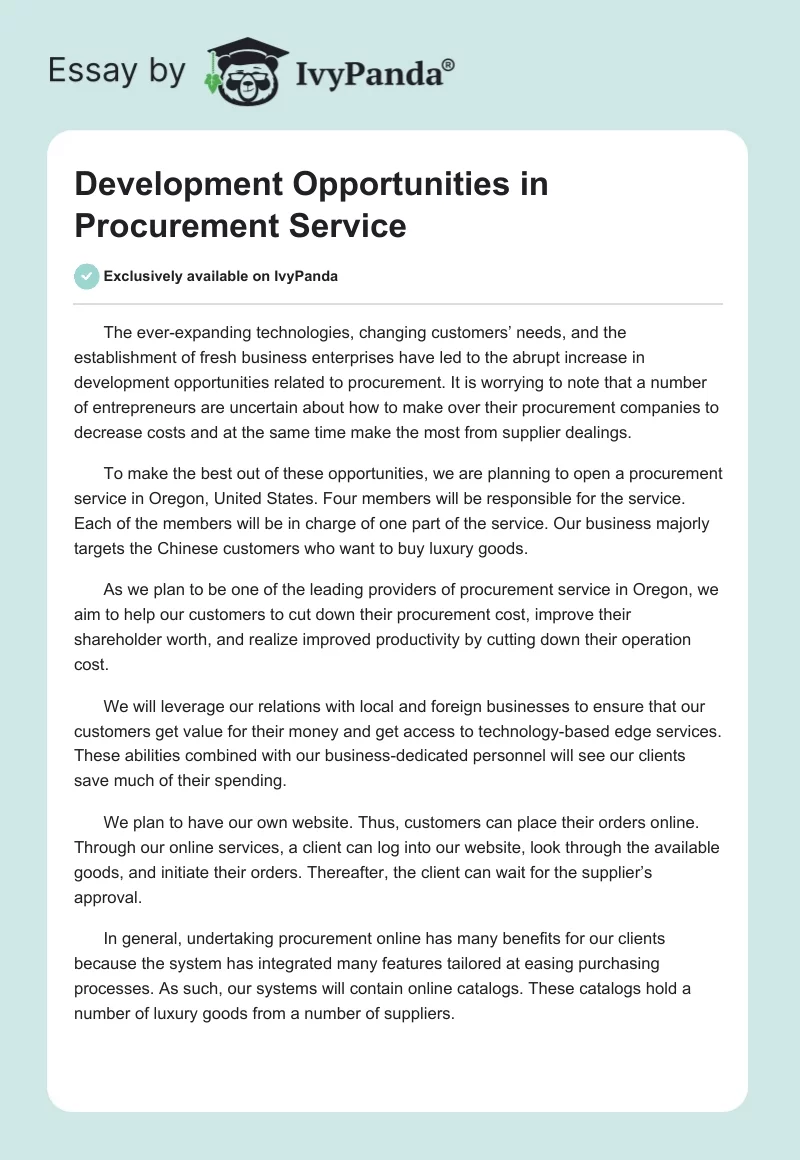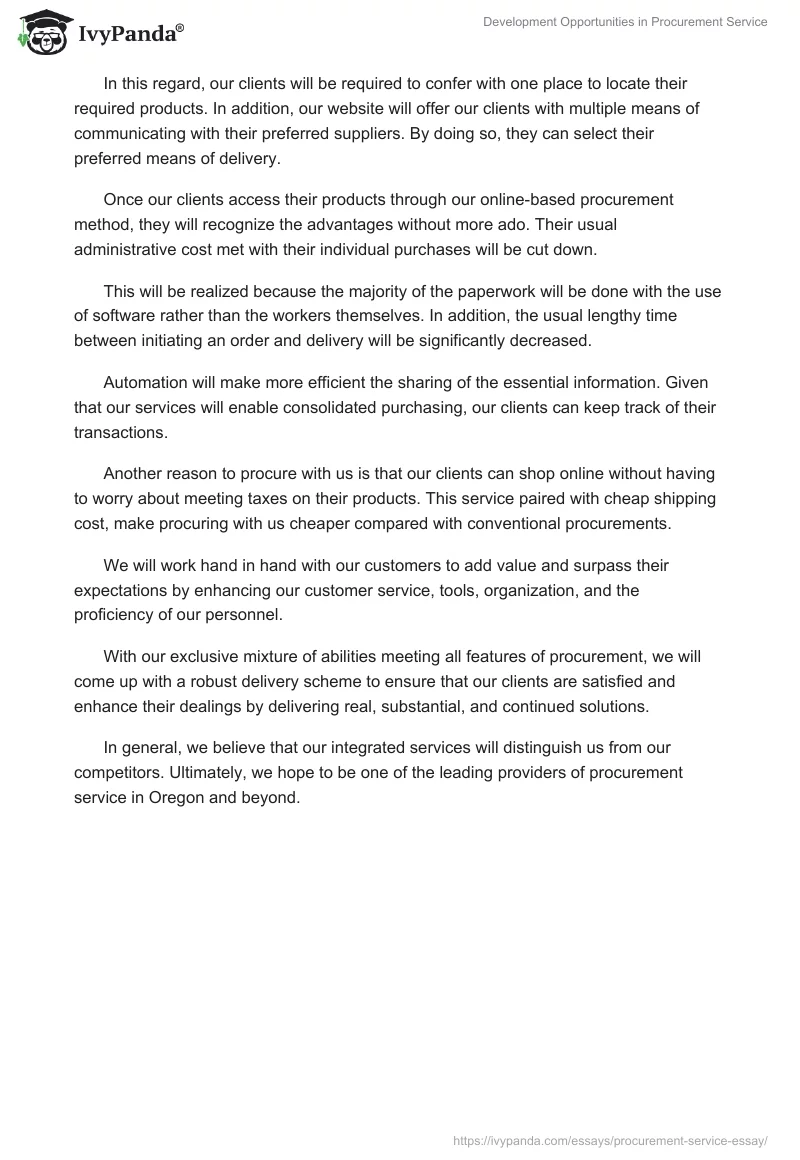The ever-expanding technologies, changing customers’ needs, and the establishment of fresh business enterprises have led to the abrupt increase in development opportunities related to procurement. It is worrying to note that a number of entrepreneurs are uncertain about how to make over their procurement companies to decrease costs and at the same time make the most from supplier dealings.
To make the best out of these opportunities, we are planning to open a procurement service in Oregon, United States. Four members will be responsible for the service. Each of the members will be in charge of one part of the service. Our business majorly targets the Chinese customers who want to buy luxury goods.
As we plan to be one of the leading providers of procurement service in Oregon, we aim to help our customers to cut down their procurement cost, improve their shareholder worth, and realize improved productivity by cutting down their operation cost.
We will leverage our relations with local and foreign businesses to ensure that our customers get value for their money and get access to technology-based edge services. These abilities combined with our business-dedicated personnel will see our clients save much of their spending.
We plan to have our own website. Thus, customers can place their orders online. Through our online services, a client can log into our website, look through the available goods, and initiate their orders. Thereafter, the client can wait for the supplier’s approval.
In general, undertaking procurement online has many benefits for our clients because the system has integrated many features tailored at easing purchasing processes. As such, our systems will contain online catalogs. These catalogs hold a number of luxury goods from a number of suppliers.
In this regard, our clients will be required to confer with one place to locate their required products. In addition, our website will offer our clients with multiple means of communicating with their preferred suppliers. By doing so, they can select their preferred means of delivery.
Once our clients access their products through our online-based procurement method, they will recognize the advantages without more ado. Their usual administrative cost met with their individual purchases will be cut down.
This will be realized because the majority of the paperwork will be done with the use of software rather than the workers themselves. In addition, the usual lengthy time between initiating an order and delivery will be significantly decreased.
Automation will make more efficient the sharing of the essential information. Given that our services will enable consolidated purchasing, our clients can keep track of their transactions.
Another reason to procure with us is that our clients can shop online without having to worry about meeting taxes on their products. This service paired with cheap shipping cost, make procuring with us cheaper compared with conventional procurements.
We will work hand in hand with our customers to add value and surpass their expectations by enhancing our customer service, tools, organization, and the proficiency of our personnel.
With our exclusive mixture of abilities meeting all features of procurement, we will come up with a robust delivery scheme to ensure that our clients are satisfied and enhance their dealings by delivering real, substantial, and continued solutions.
In general, we believe that our integrated services will distinguish us from our competitors. Ultimately, we hope to be one of the leading providers of procurement service in Oregon and beyond.


